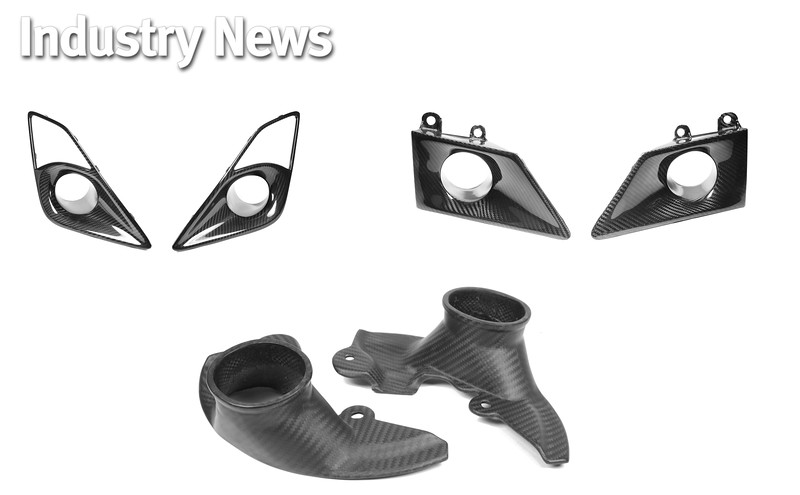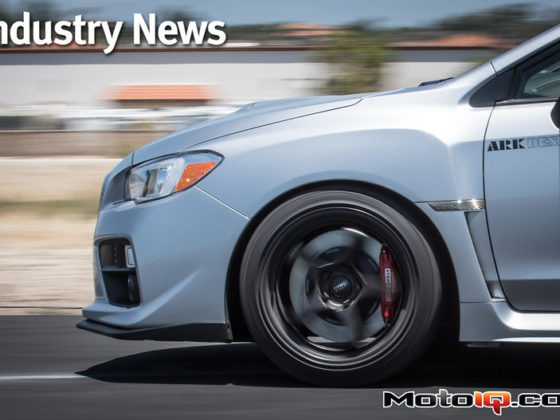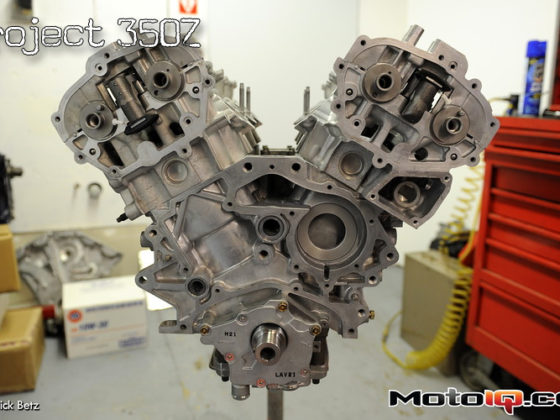,
Moving up top we get to the hood vents. Front engined production cars are designed terribly for racing. Large air inlets in the front bumper are great at getting air into your radiator and coolers that sit behind them, but once it passes through them, the air is met with nothing but obstruction inside the engine bay. Long story short, air enters the engine bay at a much greater volume than it can exit and will build pressure with speed until the pressure under the hood is equal to the pressure at the front of the car. At that point you’re no longer pulling air through the radiator or coolers and there’s a tremendous amount of lift being created by the pressure pushing up on the bottom of the hood. The ideal situation is to give 100% of the air entering the front of the car an obstruction free exit route. The air going into the inlet is channeled via ducting through the fins of the cooler, then channeled via ducting directly out over the hood. You see this on almost every high level race car but to achieve this on most production street cars requires a lot of fabrication and moving things around. An easy way to relieve some of the pressure under the hood is with proper hood vents. These will give the hot air under the hood a place to escape and help draw more fresh air through the coolers. Is the problem fixed? No, but it helps.

When a proper aftermarket vented hood is not made for your platform…make your own! Be careful when designing your vents. Just a hole will have a negative effect as it will allow air to enter under the hood causing the area under the hood to build pressure faster. You want to use slats to give the air a surface to travel over while allowing air to escape from underneath.
Moving on to the biggest drag producer on any street car, the side windows. Fortunately we run in a series and class that allows us to have lexan side windows so for 2015 we did just that. Just like the hood, when pressure builds up around the car as it’s moving it will rush to any low pressure area it can get to. Having open windows is a huge open door to the low pressure cabin giving air an easy access in and no access back out so pressure will build until it equalizes causing tons of drag.

Our side windows stop air from getting into the low pressure cabin and greatly reduce drag. The downside…they also don’t let hot air out so it gets quite toasty inside the car without air conditioning. If the driver wants, he can slide open the side windows for some fresh air with little drag penalty. The blue ringed nozzle you see is our hook up for the air jacks.

The dual-NACA duct located on our right side quarter window is a universal piece from APR Performance. The top duct directs air through a hose up to a blower fan pointed toward the driver as a sort of air conditioning. The bottom duct is plugged for now, but leaves us with an option should we need to use it for cooling something else like our differential cooler.
The underside of a car is perhaps one of the most complicated areas when it comes to aero. It can be designed to create huge downforce, but not easily. Typically in production street cars, there’s a lot of obstruction for the air traveling under the car to go around. First and foremost you want a smooth surface. Think of a water slide, if you are the air and the slide is the underside of the car you want the slide to be as smooth as possible so you slide down faster and easier. Unfortunately it’s not as easy as cutting a giant flat piece of material and sticking it on underneath, you also have to think of what you’re blocking off. Do you have an alternate way to get heat and air out of the engine bay? Do you have an alternate way of getting the heat off the exhaust to escape? This is why the bottom of our car isn’t completely flat yet. It’s going to take a lot more planning, design, testing, and fabrication to make a truly functional flat underbody.

You can see in this photo we tried to make as many flat surfaces for air to travel over as possible under the car while leaving the exhaust exposed to evacuate heat. Although there’s still some gaps this should help reduce quite a bit of drag and keep the underside of the car at a lower pressure. We sourced the maerial from APR Performance for a strong, smooth, and lightweight material that can take some shots. Not pictured is the retained use of the factory cover that creates a flat surface over the transmission between the headers to close that gap.



